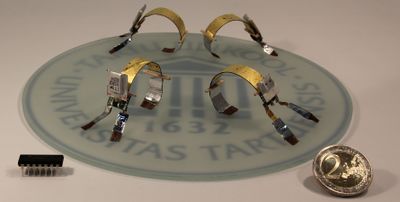Soft Robotics: Difference between revisions
From Intelligent Materials and Systems Lab
| Line 1: | Line 1: | ||
= Soft robotics = | |||
== Scope and mission == | |||
Soft robotics is a multidisciplinary field that bridges the life and robotics. We design a framework for robots with natural-like interactions with unstructured environments and with delicate objects such as human bodies. First, novel electroactive materials as robotic actuators and sensors are developed. Next, function-specific movement mechanisms that are effective and specific for shape-morphing materials and structures are identified, often finding inspiration from the nature. Finally, applications in the fields including personal medicine, minimally invasive medical instruments, wearable devices, surveillance and rescue are developed. | Soft robotics is a multidisciplinary field that bridges the life and robotics. We design a framework for robots with natural-like interactions with unstructured environments and with delicate objects such as human bodies. First, novel electroactive materials as robotic actuators and sensors are developed. Next, function-specific movement mechanisms that are effective and specific for shape-morphing materials and structures are identified, often finding inspiration from the nature. Finally, applications in the fields including personal medicine, minimally invasive medical instruments, wearable devices, surveillance and rescue are developed. | ||
[[File:FourICLrobotsCover.jpg|400px|thumb|center| Miniature energy-autonomous robots with soft actuators]] | |||
Revision as of 15:00, 5 May 2018
Soft robotics
Scope and mission
Soft robotics is a multidisciplinary field that bridges the life and robotics. We design a framework for robots with natural-like interactions with unstructured environments and with delicate objects such as human bodies. First, novel electroactive materials as robotic actuators and sensors are developed. Next, function-specific movement mechanisms that are effective and specific for shape-morphing materials and structures are identified, often finding inspiration from the nature. Finally, applications in the fields including personal medicine, minimally invasive medical instruments, wearable devices, surveillance and rescue are developed.
